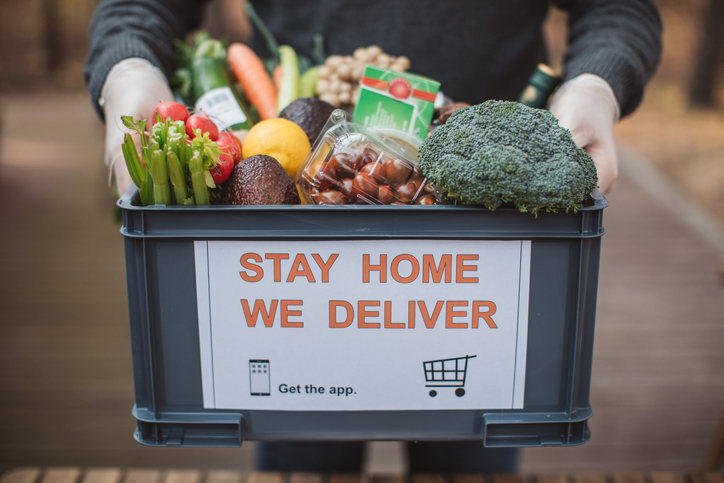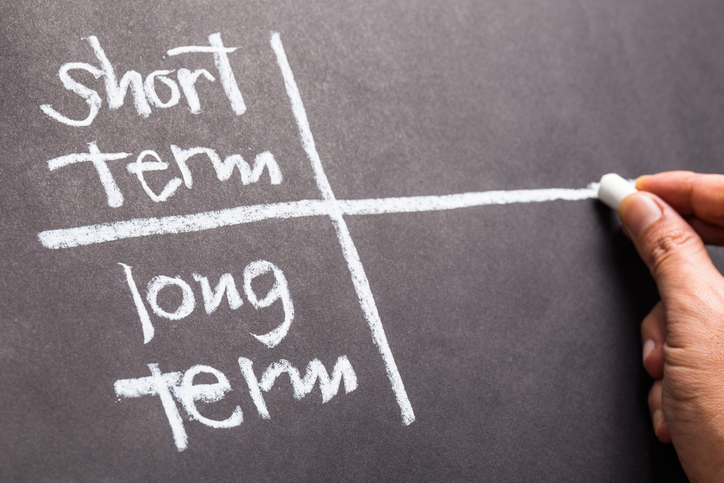Editor’s note: Jonathan La Greca is senior vice president, growth, at Toronto-based research firm Hotspex. This is an edited version of a post that originally appeared under the title, “Marketers, how will the recession impact your career and brand?”
Now is the time to invest in shopper-based design to grow share in retail.
For fast moving consumer goods (FMCG) brands, the first few months of the COVID-19 pandemic saw consumers gravitate to the center of the store, ignoring end-aisle displays and impulse products at check-out.
 In the short-term, this likely won't change as consumers are herded through one-way aisles and are shopping in a distressed and fearful state.
In the short-term, this likely won't change as consumers are herded through one-way aisles and are shopping in a distressed and fearful state.
They will continue to pick brands that reduce the friction, that they implicitly trust and that make their choice easy. Reinforced distinctive cues and memory structures will rule the day.
What scares leaders most is that many of the shopper-based design cues they relied on are gone for now … and maybe forever.
In the past few months, I have interviewed over 100 marketing and consumer and shopper insight leaders from a variety of FMCG categories. One leader said, "The days of consumers picking up a package, reading claims or engaging senses other than sight to determine which product to pick in a category are likely gone, at least for the foreseeable future."
Visual identity and cues will be critical to winning your share of attention in these forced autopilot scenarios. Is this the time to do an audit of your shelf to see how well you are positioned in your category?
Here were the other questions marketers were asking about winning at the first moment of truth in-store:
- How can I help my retailers grow our category, while also growing our share, when consumers are rushing through one-way aisles in state of distress and angst?
- How can my visual ID, including distinctive assets, influence shopper perceptions and behavior at shelf, now that consumers won’t be picking up products and evaluating them the way they used to?
- What is the right design architecture for my portfolio of SKUs to help consumers make quick and informative decisions about our category?
- How can my brand make up for lost sampling programs, sensory experiences, ineffective aisles and fewer impulse moments?
- How can I better communicate value for financially fragile consumers across different shopping contexts (e.g., in-store vs. e-commerce), retailers (e.g., mass, discount, convenience and gas), and shopper touchpoints (e.g., portfolio architecture assortment and placement; pack size and format; pricing and POS)?
Online shopping and e-commerce adoption
Brick-and-mortar shopping is at risk in the years to come and will likely favor brands that are "effectively and efficiently" marketed online.
 One leader referenced a study that suggested that the crisis accelerated e-commerce adoption by five years.
One leader referenced a study that suggested that the crisis accelerated e-commerce adoption by five years.
As new behaviors become engrained, marketers cannot afford to be slow to develop their understanding of how consumers behave online.
Unlike our friends in the U.K., where over 10% of sales come through e-commerce, many marketers in North America are feeling exposed as e-commerce had only driven 1-2% of total sales leading into the crisis, which means it hasn't received a lot of attention.
What is really interesting about the crisis is that it has forced consumers that would have never tried e-commerce to do so, especially consumers who are most at risk by leaving their homes.
Has that experience converted them over the long-term? And, if so, what can your brand do to position itself to win its fair share?
Here are other questions marketers were asking about winning at the first moment of truth in e-commerce:
- Has the initial experience on e-commerce for new users been smooth enough for them to continuing to do so as we relax restrictions? Or will they go back to the old way of doing things?
- How can we better understand consumer behaviors online and in e-commerce to ensure that my packaging imagery and copy are distinctive?
- How should we be thinking about our current brand portfolio and architecture, as well as size and formats as consumers might be looking for more affordable purchases?
- How should we be thinking about our innovation pipeline if more and more purchases are happening online and my product might not be seen as easily as it would be in-store?
- How can I disrupt shopper behavior if I am not already in their auto-refill basket during those first few e-commerce shopping trips?
Virtually-enabled consumer research
While most companies that temporarily paused their research have turned the engine back on, we have lost the ability to conduct face-to-face research with our consumers for the foreseeable future.
As one insights leader interviewee said, "We cannot afford to stop advancing our understanding of the consumer."
As a result, insight leaders have experimented with new methodologies like virtual behavioral observation to avoid falling behind with category dynamics quickly shifting.
Successful pilots seemed to combine virtual environment experiments with conscious belief and non-conscious association measurement to observe "what" consumers did, followed by digging deeper to understand "why" they did it.
How might you experiment with innovative new research approaches like virtual behavioral observation to advance your brand and demonstrate innovation to your stakeholders?
Here were a few things to consider about virtual behavioral observation methodologies:
- When building a virtual behavioral environment like a shelf or a store, it is important to find a partner that can create life-like scenarios so that you are observing behaviors that most represent reality.
- It is important to remember that no store looks exactly like a planogram with perfectly stocked items that are all front facing and arranged as planned, so instead, work to create more of a "realogram."
- Your environment should account for different variations of light depending on where the products are and adjust for the average height of the consumer depending the global markets you are exploring.
- Always try to mix in conscious and non-conscious measurement with behavioral observation to get at both what consumers are doing and why they are doing it, so that you understand the underlying motivations of their behavior.
Leaders expressed excitement about the following benefits they experienced from experimenting with virtual behavioral observation as a result of the crisis:
- A long-term safe and cost-effective way of conducting agile research.
- Deeper cuts of data, including the ability to cut by light buyers, ethnic minorities or financially fragile consumers.
- More agility for iterative testing and scenario planning during the uncertain times ahead.
Longer-term planning
Seismic, unpredictable shifts have impacted society and as a result have impacted shoppers and consumers dramatically. It feels like the world continues to change daily.
 Unfortunately, most marketers have been locked into supply chain meetings to avoid shorting customers and putting their brands at risk by forcing trial of competitive brands. As a result, they have not been able to think beyond the next few weeks. But organizations are hungry for proactive and innovative longer-term planning.
Unfortunately, most marketers have been locked into supply chain meetings to avoid shorting customers and putting their brands at risk by forcing trial of competitive brands. As a result, they have not been able to think beyond the next few weeks. But organizations are hungry for proactive and innovative longer-term planning.
If there has ever been a time for the insights function to rise to the occasion and have a seat at the table, it is now.
We are fortunate to have access to bright behavioral scientists and a variety of virtual tools that allow us to observe human behavior safely, while also uncovering both explicit beliefs and non-conscious associations.
It is going to continue to be an intense time for all of us, both personally and professionally.
But may you find some hope and happiness knowing that we are the pilots of the future economy.
